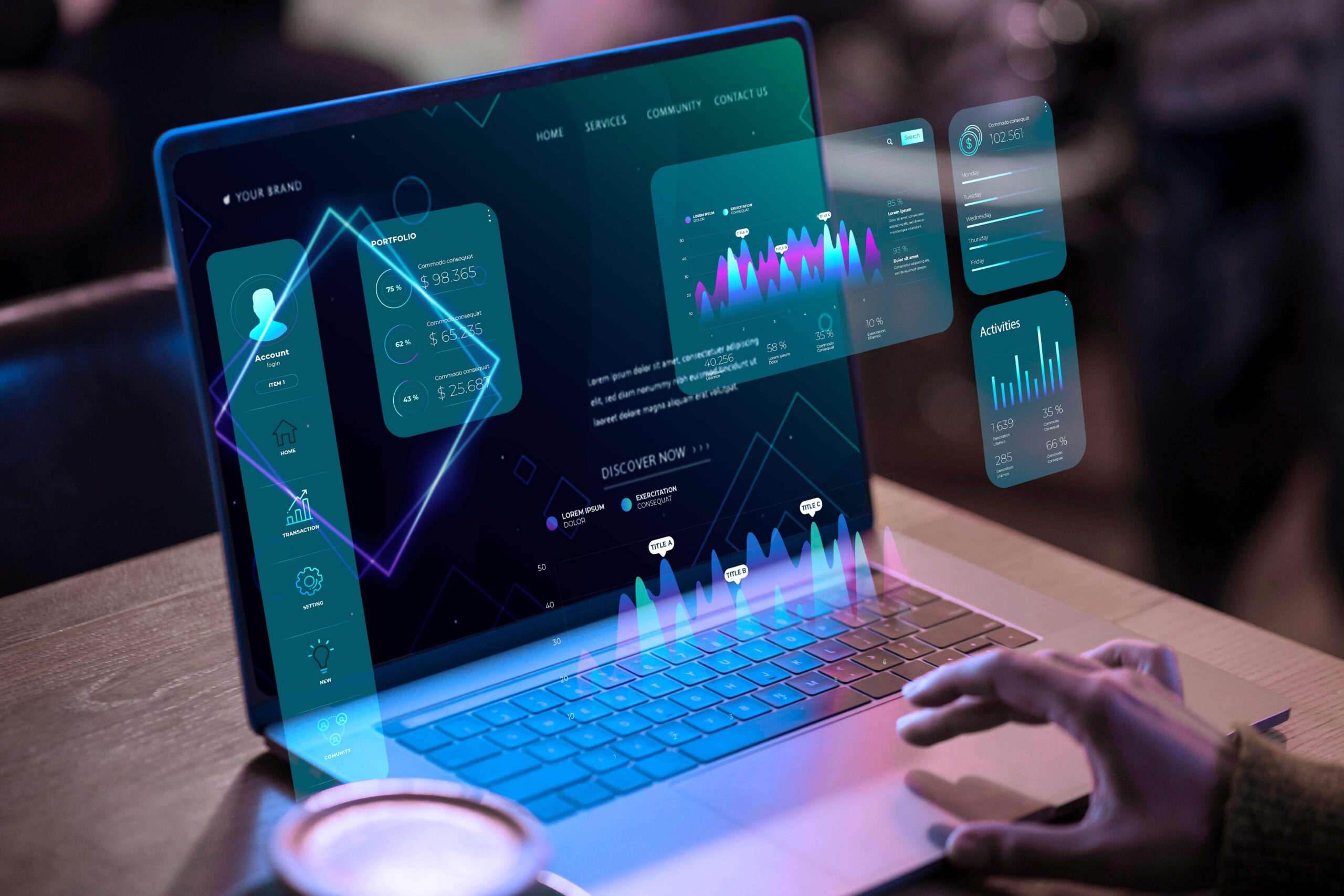- November 11, 2024
How Remote Infrastructure Management Can Transform Your IT Operations
Do Remote Operations Drain the Efficiency of Your Business?
By their very nature, remote operations bring multiple challenges to businesses, which, if not managed, can impede productivity and growth.
Global visibilities limitations, high mean time to recovery, inefficient consistency, external threats, decomposed internal IT teams become the bottlenecks to smooth running of business operations.
As more companies began to embrace RIM solutions in addressing operational efficiency and business continuity concern, the RIM market is expected to grow to USD 59.52 billion by 2026.
A suitable Remote Infrastructure Management service provider can ease these obstacles by ensuring appropriate detection and resolution of problems, controlled upkeep, and good operations of the infrastructure. All these can be achieved without engaging an exceptionally large containment team in the organization.
Curious about how RIM can transform your remote business experience? Read on to discover the key benefits and more.
What is Remote Infrastructure Management?
Monitoring and managing organizations from a remote location is known as Remote Infrastructure Management. When organizations or businesses outsource their infrastructure systems, IT managed service providers can do the needful through software by handling the monitoring and management. Organizations can view the management process in real-time anytime, anywhere.
RIM – Remote Infrastructure Management Services help businesses of all sizes, especially SMBs, to manage their operations more efficiently and productively. Eventually, it reduces the downtime and increases the uptime gearing up with the value-added solutions that makes all the tasks including security, support, and maintenance feasible.
Key Trends & Insights Include:
- Remote infra have evolved from various stages in terms of convenience to necessity. As business operations expand globally, the need for efficient remote infra management services increase and are driven by cloud, AI, and real-time monitoring tools.
- The most significant trends of remote infrastructure management solutions are the integration of cloud capabilities that enables organizations to scale infrastructure with optimal performance, and decreased costs.
- Proactive monitoring transforms infrastructure management using reactive methods, predictive analysis, enhancing infrastructure stability, and preventing disruptions. When you partner with remote infrastructure management providers, they ensure proactive monitoring and management followed by optimal results.
- RIM strategies prioritize strengthening cybersecurity for safeguarding data and operations. Multi-layer protocols such as encryption and intrusion detection are vital for defending against cyber-attacks.
Benefits of Remote Infrastructure Management
Remote infrastructure management service providers offer businesses access to a team of experts who can furnish the requirements of the organization at a ten-thousand-foot level. This team manages, maintains, and monitors remote infrastructure systems with vital benefits and support.
Benefits of remote infrastructure services include:
- Cost Efficiency: One of the key advantages of RIM is the ability to provide cost savings. Remote IT infra service providers do their best to eliminate expenses aligned with maintenance of in-house team including training, hiring, and retention. Moreover, automation with advanced tools decreases human intervention leading to minimal errors and reducing labor costs.
- Improved Scalability: Easy scalability is ensured when you deploy remote IT infrastructure service companies depending on each business requirement. Such adaptability is a boon to utilize required services and eliminate that aligns with IT infrastructure costs. So, organizations can only pay for the resources utilized and optimize expenses.
- Enhanced Security: RIM service providers improve business security by leveraging a team of experts who are proficient in industry-leading security practices. RIM specialists or expertise aid in mitigating the risk of data breaches and ensuring utmost protection. However, remote IT infra services tend to utilize advanced security tools and technologies to protect IT infrastructure hassle-free.
- Increased Agility and Flexibility: Remote Infrastructure Management helps organizations adapt to changing needs rapidly. With RIM services, companies can scale resources, bring in innovative technologies or even manage multi cloud environments without the need of increasing the in-house teams. This guarantees that the infrastructure keeps up with the business requirement supporting growth and on the other hand, flexibility with truly little interruption.
- Centralized System: Remote infra systems are extremely useful for organizations with multiple locations, so that they can opt for a centralized process and process business operations in a streamlined and systematic manner.
Key Features of Effective Remote Infrastructure Management
- Continuous monitoring and reporting: With real-time monitoring of infrastructure, anomalies are detected, and issues are flagged way before they could cause disruptions to business operations minimizing IT downtime.
- Incident management and resolution: This structured process is used for identifying, documenting, and resolving incidents by ensuring rapid recovery from disruptions and minimizing impact on business continuity.
- System updates and maintenance: Remote infra management services provide regular updates, and patches, maintaining secure and optimized environment. It involves software upgrades and preventive maintenance for improving business performance to industry standards.
- Integration with other IT management tools: Remote infra management services allow seamless connection with tools for monitoring, incident tracking, automation, and security, and helps in managing diverse components in a single platform. Apparently, this integration optimizes workflows, resolves issues proactively, and enables cross-functional insights.
Challenges in Implementing Remote Infrastructure Management
- Resistance to change within organizations: Organizations seek substantial changes when it comes to workflows and processes. Teams may act reluctant to adopt new systems when it’s not familiar and challenging. To overcome this resistance, it requires transparency in communicating the benefits, proper training, and management of change strategies.
- Complexity of integrating RIM tools with existing systems: RIM tool integration into legacy or multivarious IT systems presents a more complicated challenge because this tool is supposed to deliver its capabilities across multiple platform and architecture. This typically involves custom configurations, API integrations, and changes to system architecture which is not only time-consuming but also demands a lot in terms of resources. Organizations often confront these challenges by trying to balance interoperability with no compromises in performance, security, and seamless integration.
- Ensuring data privacy and compliance: RIM’s handling of sensitive data demands strong compliance with data protection and industry regulations. Organizations must ensure to place strong security protocols, regular audits, and clear data policies for compliance. Managing these can be complex and requires secure access control, continuous monitoring, and streamlined workflows for the operations to run without disruptions.
Steps to Implement Remote Infrastructure Management
- Assess current IT infrastructure: Assess the current IT structure to determine all areas that would benefit from a remote infrastructure management solution to rule out potential gaps in support and monitoring.
- Identify suitable RIM tools and solutions: Select proper tools and solutions that could be aligned and utilized in concert with business and existing systems for scalability with future development.
- Develop a clear implementation strategy: Outline a detailed plan of remote infra management framework that aligns with the objectives, timelines, and roles to ensure minimal interruption to operations.
- Training on RIM practices: Train your teams to follow better on remote infra solutions, RIM policies, tools, and best practices to ensure effective acceptance and use.
The Future of IT Operations with Remote Infrastructure Management
The market is rapidly evolving and predicted to grow in the coming years. The CAGR touches to 9.7% by 2027. Similarly, database management and storage system management are also expected to grow in the next upcoming years.
This growth signals a wave of innovation and can anticipate smarter solutions, with expanded service offerings. Also, the possibility of full cloud monitoring can be anticipated to increase as infrastructure moves to cloud at a greater level.
RIM will become even more accessible to small and medium businesses that currently depend on manual monitoring processes or lack monitoring completely. Additionally, as costs for data centers, servers, and resources increase, SMBs will turn to monitoring tools that provide crucial insights into network usage, bandwidth, and infrastructure dependencies.
Conclusion
Not all businesses can manage IT infrastructure especially when it’s remote. To have a team of experts to manage and maintain is hazardous. Remote IT infrastructure service providers can make the job easy with less costs. But choosing the right provider is the challenge. Choose the right remote IT infra management provider and spend your time on much needed operations.




